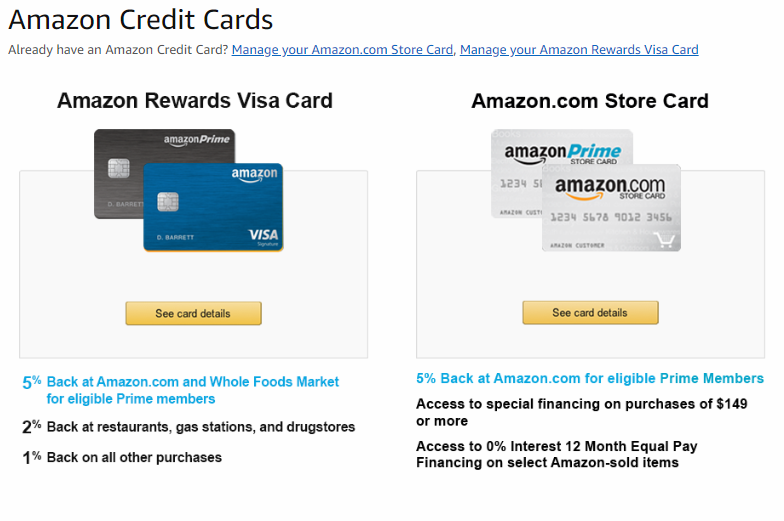Introduction
The Company
Amazon, also known as Amazon.com Inc., is the largest electronic commerce and cloud computing company in the United States and second in the world. It began its operation as an online bookstore in 1994. However, it gradually expanded its product catalogue into music, video, and software downloads. Eventually, the website began offering electronics, home appliances, and a variety of other products.
The popularity of the store leads to a variety of side ventures being organized by its management. The company is constantly expanding and experimenting with its services. The company uses very innovative methods of consumer behaviour manipulation that ensured its popularity among online shoppers. The company has also shown to be a relatively poor employer as the working standards of Amazon workers are very low and contain violations of basic worker rights (Ritala et al. 2014). Nevertheless, despite criticism from labour organizations, the company did not see a significant reduction in sales, which is likely tied to the way Amazon uses consumer behaviour theory.
The Market
Amazon has been the dominating force of the online retail market over the last ten years. While more specialized online stores are still operating online, the majority of them are partnered with Amazon can be chosen as a retailer during the ordering process on Amazon. However, a Chinese online store called Alibaba became more popular than Amazon due to its competitively low prices and a much larger consumer base due to international availability. Alibaba serves as an online marketplace for smaller retailers from China and other countries (Glowik 2017). People are able to choose different manufacturers of similar products and vote on their reliability. Alibaba does not sell a lot of brand items, and there is a high likelihood of receiving faulty products, but its prices are competitive enough to allow the company to create loyal customers.
Utilization of Consumer Behavior Theory Within Amazon’s Marketing Activities
Heuristic Theory in Marketing
Heuristic theory and the majority of the modern understanding of its applications were proposed by Herbert A. Simon. In his later works, he focused on the idea of Heuristics, which he described as ways of reaching satisfactory solutions with a relatively low amount of thinking (Grewal et al., 2016). Modern life presents thousands of decisions that a person has to make on a daily basis. To resolve these decisions, people use heuristics. They provide an easier way to resolve them through simplified beliefs about the world. The same applies to how people make purchasing decisions. People are not interested in always performing a detailed market analysis when they decide to buy a new television or a microwave. This is why marketing that is focused on simple statements and attractive images is often more effective than the technical specifications of the product. Amazon exceeded in its ability to automate heuristics in the work of its recommendation algorithm.
The use of Heuristics Theory by Amazon
Amazon uses heuristics in a variety of ways and to great effect. The idea of “social proof” describes the phenomenon of people choosing to align with the majority of people when making purchasing decisions. It is logical to purchase an item that is seen as satisfactory by the majority of people. Amazon uses this concept of heuristics in their system of recommendations that are given to the customer in multiple cases. Four is given directly on the product page. The first takes the form of a “frequently bought together” section of the page that presents a combination of items that people often purchase in a single order (Smith & Linden 2017).
It always includes the product that the customer selected, as well as one or two other items such as accessories or products that may complement the original item. The customer is given an option to buy the product on its own, select one or both of the presented products. This type of heuristics presents the customer with “social proof” that these products are bought together. While Amazon does not reveal how often this type of purchase is made, it is likely that this approach to heuristics is beneficial for the company because it is one of the most highlighted sections of every product page on the site. From a customer’s perspective, this section utilizes the core idea of heuristics by removing the need to find complementary products such as protective screens for phones from the customer. Amazon is likely to have dozens of choices for such products, and presenting one that is stated to be popular with other customers simplifies the selection process dramatically.
The second section that utilizes the idea of “social proof” is titled “customers who viewed this item also viewed.” It is a simpler section that presents products that other users examined during their selection process. It only includes items that a significant number of people viewed before coming to this product page. This allows for only products of a similar type to be displayed in this section. The name, rating, and price of the items are displayed, but no product description is available (Smith & Linden 2017). This gives all customers a chance to quickly consider multiple choices before making a purchase based on the ratings left by other users and the appearance of products.
This idea is further elaborated upon by the third section based on the “social proof” heuristics. It is titled “compare with similar items” and contains a detailed breakdown of the product’s specifications as well as three other products of a similar type. The “social proof” aspect of heuristics is presented in the “User Rating” portion of the section. A customer is able to quickly consider the quality of the product based on its reception by other people and then consider whether the characteristics of the product are suitable for them. This section also allows for a heuristic concept of “fast and frugal” purchases (Smith & Linden 2017). It removes the hassle of going to four different pages and comparing them when choosing a product that has many alternatives.
The last section that utilizes “social proof” heuristics is called “customer reviews.” It is the most complex section of the product page, with many filtering options presented for the customer to make a purchasing decision. It contains a visualization of an overall 5-point score based on the average response from the customers. Underneath, a section that shows a number of keywords that are present in reviews are given as a way to filter reviews that mention them. Then the section presents reviews that were found to be most helpful by other customers, as well as the most recent reviews. A section that contains images of the products made by customers is also present as a way to show how the product looks in everyday settings. The vast options presented by this section give the customer a detailed impression of the public reception of the product, which is perhaps a more credible way to make a purchasing decision for the customer (Smith & Linden 2017). A simple 5-point rating does not describe the flaws of the product, but by reading a review, anyone can see what is wrong with the product. In addition, it may also show that that thing that one person considers negative is, in fact, positive for another.
These elements of persuasion heuristics are not used for advertising products directly, but they are still capable of changing the purchasing decision of the customer. Since Amazon makes money on every product sold on its marketplace, there is no need to provide false information to the customers, and any of the presented options would result in profit for the company. However, the most effective use of persuasion heuristics is the recommendation system that Amazon uses in its advertisements and on the website. Whenever a registered user purchases a product, adds it to their “wish list,” or even browses its page, Amazon records this activity and feeds it into its algorithms. Then, this information is used to present the user with other types of product that are similar or are associated with items that the customer is interested in.
This approach utilizes a complex variation of the “familiarity heuristic” that is based on the idea that the user is likely to purchase a product that is familiar to them (Grewal et al., 2016). For example, a person who previously purchased an iPhone is likely to have other products made by Apple Inc. presented to them, as well as accessories made specifically for the phone the customer purchased. The same information is used in the advertisements that the user sees on other websites. When visiting Amazon’s website, the majority of users receive a special file in their local cache that uses the information gathered by the algorithm to customize the advertisements that the person sees on other websites. These advertisements often show a number of products from the recommendation section with their names and prices (Smith and Linden 2017). The same principle of persuasion heuristics is used in this approach, and it has shown to be very effective.
Compliance heuristics are also used by the website through its frequent “limited time” sales of products. It is especially evident during the “Black Friday Sale” and “Cyber Monday”, which utilize very aggressive marketing approaches based on heuristics. Very expensive items often gain significant discounts, which prompt users to purchase them quickly. However, these products are often limited in quantity and are unavailable after all of the stock is sold out. To accentuate the scarcity of the product, Amazon shows a special warning when the stock is close to being depleted. It pushes customers to become anxious about “missing out” on purchasing an expensive product at a discounted rate. These sales are extremely profitable for the company, and its use of heuristics plays a large part in this success (Fulgoni & Lipsman 2016). However, its competitors use very similar techniques.
Critique of the use of the Heuristic Theory in Comparison to Its Competition
Amazon is an extremely successful company. However, due to its inability to perform on a worldwide scale, its user base is smaller than its main competitor Alibaba. The use of heuristic theory and concepts by Amazon can be considered to be extremely successful. While the field of online commerce offers very comparable experiences to consumers regardless of the size of the success of any given company, Amazon was able to distinguish itself through its use of heuristics and algorithms that are based on them. The site is preferred by the majority of citizens in the United States and the European Union, and its various side ventures and services are currently expanding and becoming very popular. Amazon presents a very convenient marketplace with an extensive catalogue of products, including those produced by the company (Fulgoni & Lipsman 2016). In addition, all of its services are customized based on the customer’s preferences and purchasing history.
However, Alibaba and its various websites also use heuristics in a similar fashion. It is important to note that while the main company is called “Alibaba,” the direct competitor of Amazon is, in fact, its secondary site “, AliExpress.” It provides items for customers in small quantities in a very similar form to Amazon. The use of heuristics by AliExpress can be seen in the importance of its rating systems. While people are naturally more inclined to buy a product that was positively rated by others, this example of “social proof” heuristics is much more important on AliExpress. Frequent buyers are aware that the quality of products purchased on the website may be unsatisfactory due to poor manufacturing standards or faulty assembly. To increase the chances of receiving a satisfactory product, people tend to purchase items only from retailers who are highly rated through the AliExpress rating system. The company itself is aware of this, and the purchasing process always involves the input of customer feedback after the product has been delivered. The website provides a lot of near-identical products sold by different retailers, which makes the inclusion of ratings not only a heuristic marketing choice but also a necessity. AliExpress also uses recommendation algorithms similar to those of Amazon both on the website and in its advertising (Jung et al., 2015). Due to the prevalence of generic brand products on the site, the advertisements are less appealing but still serve the same heuristic function.
The use of scarcity heuristics is more accentuated on AliExpress with the use of timed sales called “flash deals.” They are constantly present on the main page of the site and provide the feature with a series of products at a discounted price available for a number of hours. The scarcity heuristics are also used in the presentation of these deals. A countdown timer is displayed next to the section, and the percentage of claimed stock is shown under each of the products. The sales provide a wide variety of products, from clothing to home appliances. This appears to be an effective technique as the majority of the products are sold out by the end of the sale period (Jung et al., 2015). The use of heuristics by AliExpress overall is effective but not as polished as Amazon’s. The difference lies in the presentation of heuristic elements on the sites. While the “Flash Deals” section of AliExpress is effective, the rating system appears to be more of a necessity due to the abundance of poor quality inventory rather than a way to make the customer purchase any given product.
Application of Behavioral Learning Theories by Amazon
Theory of Classical Conditioning and Its use of Higher Order Conditioning by Amazon
Classical conditioning is one of the oldest types of conditioning. It was initially based on the work of a Russian scientist Ivan Pavlov. Specifically, it originated from his research on responses of bodies to external stimuli. His most famous experiment tested whether it is possible to condition a dog to become hungry from external stimuli of a bell ring. By monitoring the salivation of the dog during the experiment, it was determined that such conditioning is possible. Initially, the dog was fed every time the bell rang. However, after the food was removed from the process, the dog was still salivating as if the food was present in front of it (Jarius & Wildemann 2015).
This approach is often applied in the field of advertising by creating an association between pleasurable sensations and the product. For example, food advertisements often accentuate the sensation of taste through appetizing footage of ideal food preparation and visually enhanced products (Folkvord et al., 2016). A consumer is expected to become hungry and get a craving for the product. Higher-order conditioning is also used in advertisements to create a more complex association. For example, by using a popular song in an advertisement, a potential customer may associate it with the product whenever they hear it (Zabkar & Eisend 2017).

Amazon advertisements are often focused on creating a sense that through the use of Amazon, customers would be able to improve their everyday lives. A 2016 commercial for Amazon’s premium services “Amazon Prime” showcases the use of classical conditioning through the use of emotionally charged music and a scenario that can be perceived as cute (see figure 1). The advertisement evokes the feelings of family kinship and happiness that comes from family pets having affectionate interactions with children. This interaction occurs due to the use of the Amazon Prime delivery service. The emotion is heightened through the use of “You and Me” by Arielle Paul as the background music. While this song is not famous, its emotional content became complementary to the feeling that the commercial wanted to deliver (Anurag 2016). This commercial is capable to successfully condition a person to associate Amazon Prime with positive emotions of family interactions.
Theory of Operant Conditioning and Its use by Amazon
Operant conditioning is focused on learning behaviours through the use of positive or negative reinforcement. It was popularized by American behaviourist Burrhus Frederic Skinner through experiments on mice and birds. By creating introducing a pleasant or unpleasant stimulus to an existing action, Skinner was able to condition birds and mice to perform complex tasks (Blackman 2017). Companies often utilize positive reinforcement in their business practices to create an enhanced feeling of satisfaction in customers. The most common way that firms use operant conditioning on customers is through rewards and loyalty programs. If each purchase is accompanied by an additional benefit, a customer is more likely to continue using the store (Pear 2015). While the initial goal of the customer is to purchase a specific product, their satisfaction of purchase can be enhanced through bonus programs that could provide future discounts, inexpensive products, or other benefits depending on the business. In addition, if a higher tier of rewards may be earned through further purchases, it is likely to increase their frequency (Söderlund & Colliander 2015). Customers are then motivated not only by their interest in purchasing a specific item but by the desire to enhance their feeling of satisfaction by gaining access to better rewards (Buchanan 2015). The rewards are effective operant conditioning stimuli and allow the customer to feel a more powerful state of satisfaction during purchase.

Amazon primarily utilizes operant conditioning in its cashback deals through the use of Amazon-sponsored credit cards. By using a specific brand of credit card, customers may save certain percentages of cash on different services that Amazon provides. However, its use of site-exclusive sales can also be considered an example of operant conditioning. Since these sales provide prices that are often below any prices available in other stores, customers are incentivized to purchase specifically through Amazon (see figure 2; “Credit & payment cards” 2018). Various bonuses and event-based sales are also present on the site, but they are not universal and may apply only to a specific department or service. The Amazon Prime membership program could also be seen as an example of operant conditioning. It allows customers to receive a multitude of bonuses and additional services by paying a membership fee. The service extends to the majority of projects that Amazon operates, and by combining all the benefits on all the services, the membership appears to be beneficial, even to customers who have no interest in anything outside of buying products (see figure 3 “Amazon Prime” 2018).

Comparison of Operant Conditioning use by Amazon and AliExpress

While Amazon provides a wide variety of products, almost none are exclusive to it, which makes seeing large discounts on items that are available in other stores very appealing. AliExpress is not capable of achieving the same effect due to the majority of the products being generic and not branded. This could explain the difference in its approach to operant conditioning. One of the most visible elements that use it is the fact that by using the AliExpress app, customers can receive additional discounts on items. This requires an additional level of involvement from the customer, but the desire for better deals is likely to attract more people to the service.
Another example of operant conditioning is in the “bonus points” system that the site provides. With each purchase, customers earn points that let them upgrade their status on the website. The higher status allows users to receive more special prices on products as well as other bonuses. AliExpress also organizes special promotions during which users can earn points through various activities. While this system does not provide a significant reward for each purchase, it has a cumulative benefit and can create an incentive for the customer to be more involved in purchasing products. AliExpress also contains a rare case of negative reinforcement in their system as the benefits of higher-tiers can be lost by users if they do not continue to purchase items monthly (see figure 4; “My AliExpress” 2018). Amazon’s incentives are more beneficial to the customer but are less consistent.
Motivational Theories of Attitude
Theoretical Concept
The functional theory of attitudes was developed by Daniel Katz in 1937. It can be used to better understand consumer behaviour. Katz states that the most effective advertisements are those that address the motives of the potential change of attitude by the customer. Attitudes serve four distinct functions for people. The first function is utilitarian, and it concerns the function of the product. A product that does exactly what the customer desires is satisfactory. The second function is called “value-expressive.” It describes a situation in which a customer wants to buy a product based on how it expresses their personality. The third type is called “ego-defensive function.” This function applies to attitudes that are motivated by the desire to boost a person’s self-image. The last type is the “knowledge function.” It applies to situations in which an attitude is formed about a product through mental processes often affected by heuristics (Schade et al., 2016; Albarracin et al., 2014).
Amazon’s Use of The Theory of Attitude

Amazon primarily advertises its utilitarian function. Both the products produced by the company, such as e-book readers and its online retail service, are positioned as utilitarian in nature. Advertisements of the store accentuate convenience, a wide variety of products, sales, and quick delivery, which Amazon products are advertised by showcasing their functions and exclusive benefits. For example, a common banner ad for Amazon reads “All from the Earth’s biggest selection” (see figure 5; “Integrating mobile banners” 2018). This specific advertisement accentuates the fact that Amazon has a very large inventory of products which partially fulfils the utilitarian desire of the consumer to buy a specific item. Customers are motivated to use Amazon because it is likely to have the product they desire at a low price, which will be delivered soon after the order is placed.
Comparison of Amazon and AliExpress in the use of Attitude Motivation
AliExpress is almost identical in its approach to motivation. Due to the low number of brand items on the site, the focus is made on the utilitarian function of the products. AliExpress provides almost every type of product that can be shipped internationally at very low prices, and this is the main focus of its advertisements. For example, AliExpress is often advertised by accentuating the discounts and bonus systems it provides to the customer. The similarity in motivational attitudes between Amazon and AliExpress is not surprising due to the general nature of their marketplaces. When a company provides a wide variety of products and services, a utilitarian approach to motivation is safe and effective.
Summary of Key Points
Amazon is the second-largest online retailer in the world. It provides a large variety of products at low prices. Its direct competitor and the largest online retailer in the world are Alibaba and its online store AliExpress. Heuristics persuade people to make decisions without careful consideration. Amazon primarily uses the concept of “social proof” and “scarcity heuristics.” The same could be said about AliExpress. However, their approach is less effective and serves a specific function. Classical conditioning can be used to create associations between pleasurable feelings and products. Amazon uses it in advertisements to associate feelings of family and cuteness with its Amazon Prime service. Operant conditioning is based on the use of positive or negative reinforcement to elicit a specific response. Amazon utilizes cashback programs, discounts, and premium services to create an enhanced feeling of customer satisfaction. AliExpress uses a bonus program that is less effective but more consistent. The motivational theory of attitudes states that there are four types of functions that motivate attitude change. Amazon and AliExpress both use utilitarian approaches to their advertisements due to the general nature of their services.
Reference List
Albarracin, D, Johnson, BT & Zanna, MP 2014, The handbook of attitudes, Psychology Press, London.
Amazon Prime 2018, Amazon, Web.
Anurag, S 2016, Amazon Prime commercial 2016 lion, online video, Web.
Blackman, DE 2017, Operant conditioning: an experimental analysis of behaviour, Routledge, Abingdon.
Buchanan, J 2015, ‘Loyalty rewards — benign business practice, or a potentially harmful inducement? The case of electronic gaming machines’, Journal of Business and Economics, vol. 6, pp. 1116–1127.
Credit & payment cards2018, Amazon, Web.
Folkvord, F, Anschütz, DJ, Boyland, E, Kelly, B & Buijzen, M 2016, ‘Food advertising and eating behavior in children’, Current Opinion in Behavioral Sciences, vol. 9, pp. 26–31.
Fulgoni, GM & Lipsman, A 2016, ‘The future of retail is mobile: how mobile marketing dynamics are shaping the future of retail’, Journal of Advertising Research, vol. 56, no. 4, pp. 346–351.
Glowik, M 2017, Global strategy in the service industries: dynamics, analysis, growth, Taylor & Francis, Abingdon.
Grewal, D, Roggeveen, AL & Nordfält, J 2016, ‘Roles of retailer tactics and customer-specific factors in shopper marketing: substantive, methodological, and conceptual issues’, Journal of Business Research, vol. 69, no. 3, pp. 1009–1013.
Integrating mobile banners 2018, Amazon, Web.
Jarius, S & Wildemann, B 2015, ‘And Pavlov still rings a bell: summarising the evidence for the use of a bell in Pavlov’s iconic experiments on classical conditioning’, Journal of Neurology, vol. 262, no. 9, pp. 2177–2178.
Jung, JC, Ugboma, MA & Liow, AK 2015, ‘Does Alibaba’s magic work outside China?’, Thunderbird International Business Review, vol. 57, no. 6, pp. 505–518.
My AliExpress 2018, AliExpress, Web.
Pear, JJ 2015, ‘Behavior modification’, in H Henk (ed.), Encyclopedia of global bioethics, Springer, Cham, pp. 1–9.
Ritala, P, Golnam, A & Wegmann, A 2014, ‘Coopetition-based business models: the case of Amazon.com’, Industrial Marketing Management, vol. 43, no. 2, pp. 236–249.
Schade, M, Hegner, S, Horstmann, F & Brinkmann, N 2016, ‘The impact of attitude functions on luxury brand consumption: an age-based group comparison’, Journal of Business Research, vol. 69, no. 1, pp. 314–322.
Smith, B & Linden, G 2017, ‘Two decades of recommender systems at Amazon.com’, IEEE Internet Computing, vol. 21, no. 3, pp. 12–18.
Söderlund, M & Colliander, J 2015, ‘Loyalty program rewards and their impact on perceived justice, customer satisfaction, and repatronize intentions’, Journal of Retailing and Consumer Services, vol. 25, pp. 47–57.
Zabkar, V & Eisend, M (eds.) 2017, Advances in advertising research VIII, Springer Fachmedien Wiesbaden, Wiesbaden.